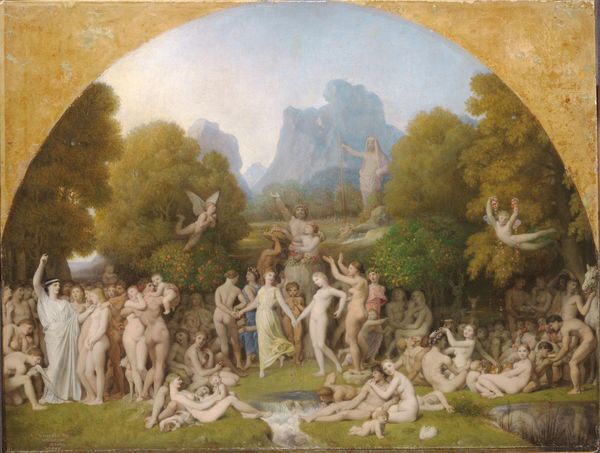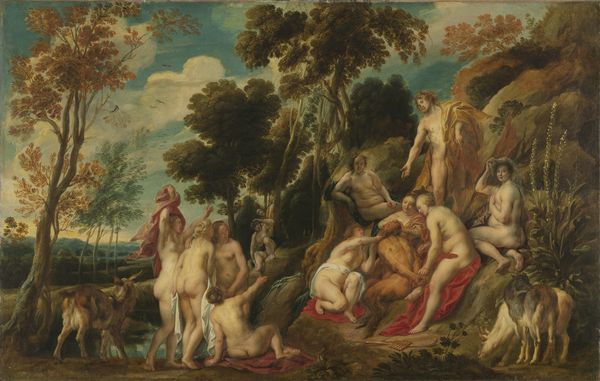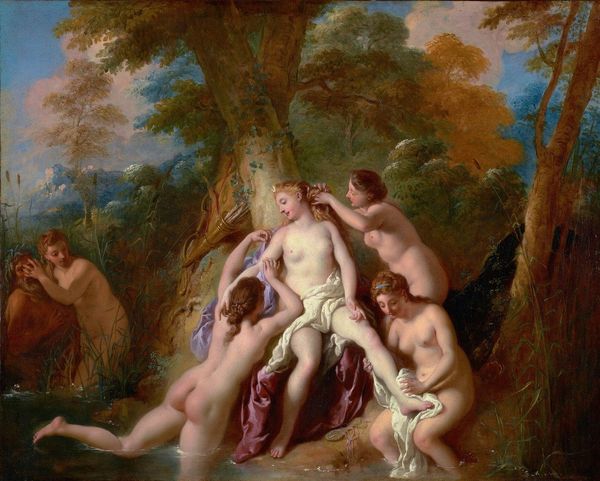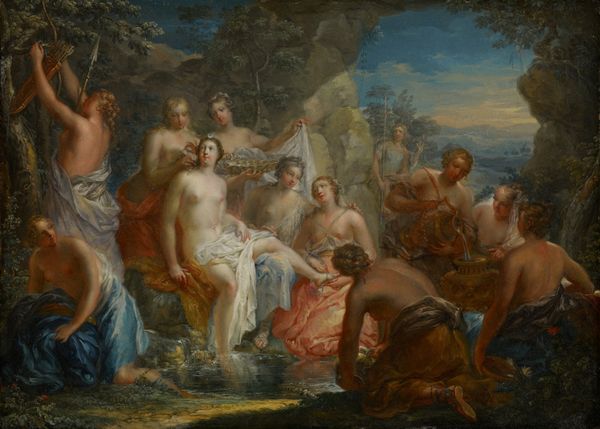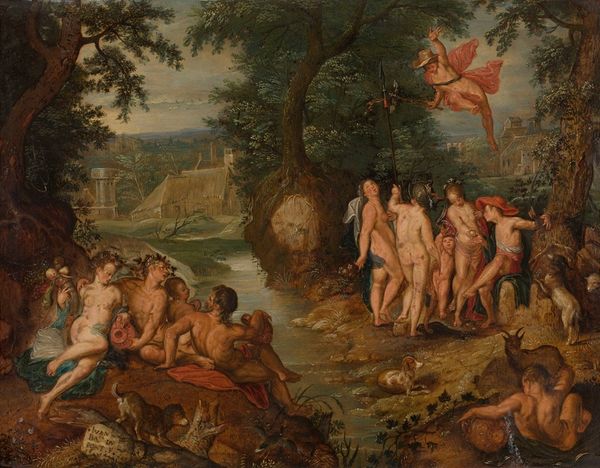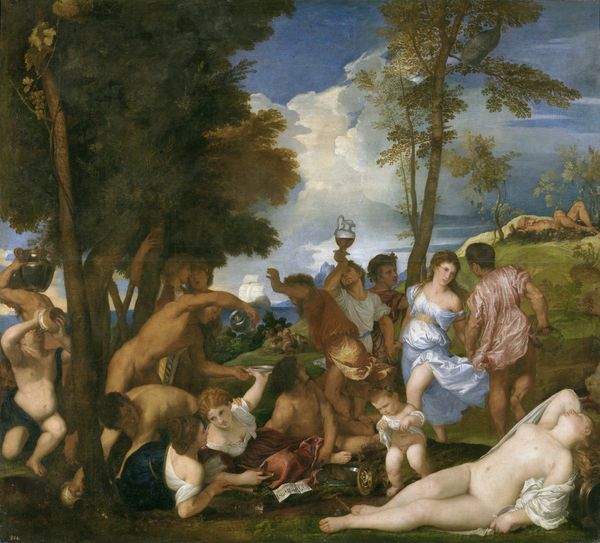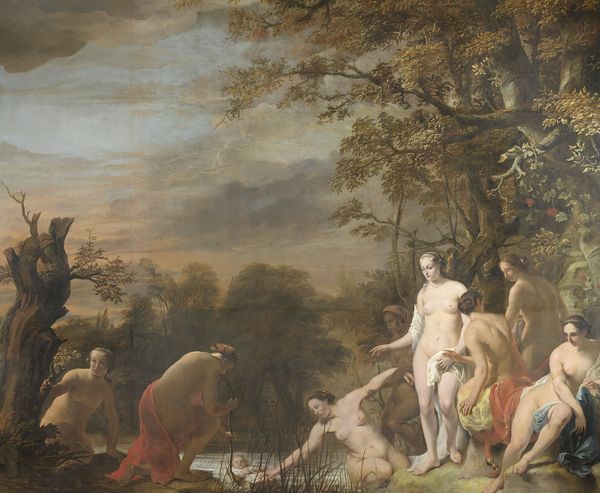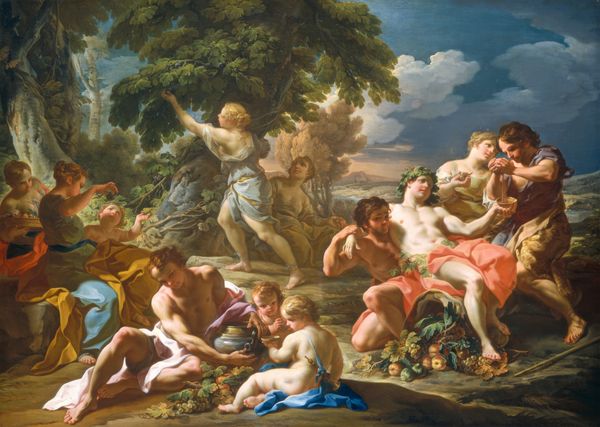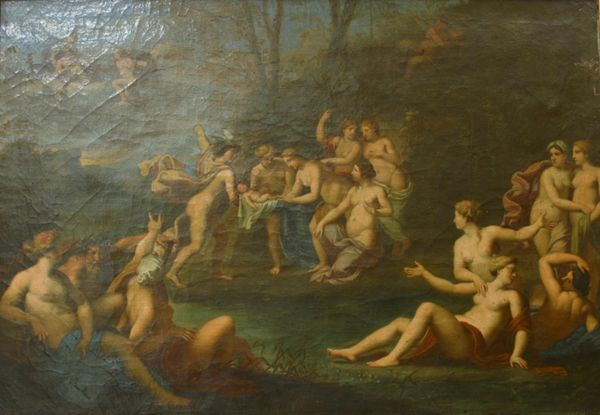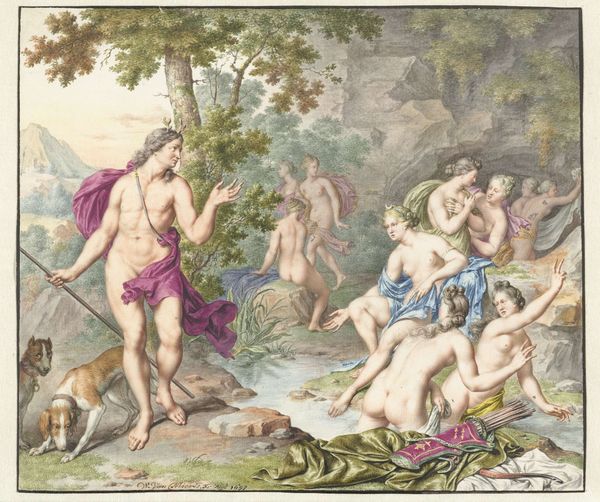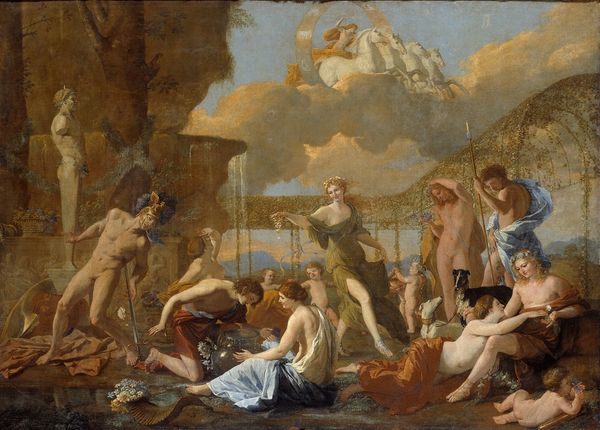
Copyright: Public Domain: Artvee
Editor: Here we have Jean-Auguste-Dominique Ingres's "The Golden Age," created in 1862. It's an oil painting teeming with figures, and overall evokes a dream-like classical scene. How do you interpret this work, especially its numerous figures and serene atmosphere? Curator: This "Golden Age" overflows with symbols, echoing a yearning for a lost paradise. The figures, classically rendered nudes, recall ancient Greece, embodying ideals of beauty and harmony. Note how Ingres uses the landscape – a gently rolling Arcadia – to further suggest a time before strife. Editor: I see the classical references. Is there a specific message Ingres is trying to convey? Curator: The abundance of figures speaks volumes. They are engaged in activities of leisure, love, and artistic expression, a symbolic return to a purer state of being, yet even in this ideal state, consider the faint echoes of melancholy or unrealized potential hinted at through subtle gestures or groupings. Does that strike you too? Editor: Yes, I do perceive that nuance. It isn't a simple, straightforward utopia. Curator: Exactly. Ingres employs these visual symbols—nude figures, classical references, idealized landscape— to tap into a cultural memory of innocence and simplicity. It’s a reflection on humanity's aspirations and our persistent longing for an unattainable past, seen through the lens of the Neoclassical movement and academic art. Editor: I hadn't thought about the "unattainable" aspect so clearly before. Thank you. Curator: My pleasure. It's in considering the visual symbols, and how they've evolved over time, that we start to understand their cultural weight and continuing psychological power.
Comments
No comments
Be the first to comment and join the conversation on the ultimate creative platform.
